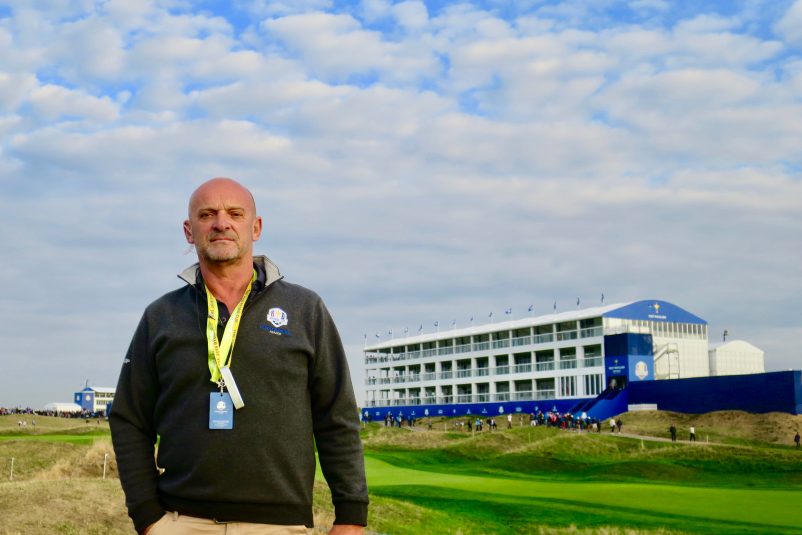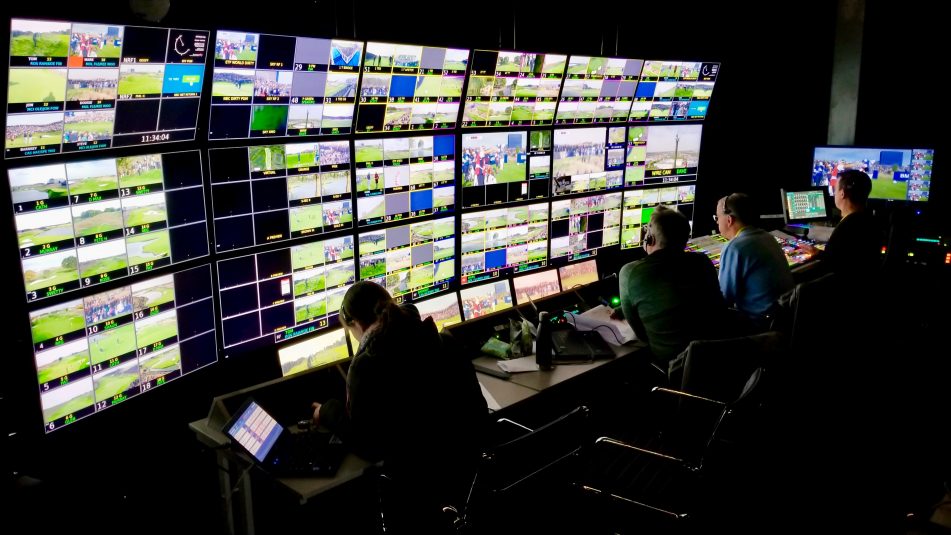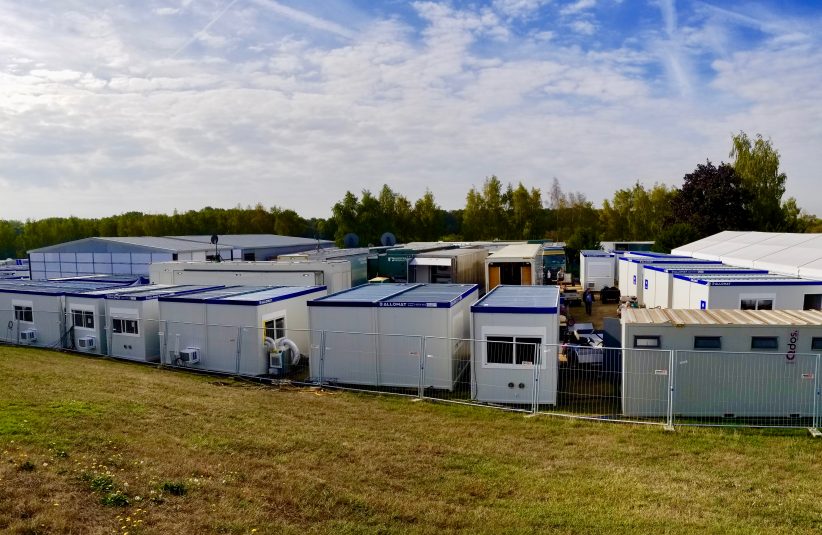Live From the Ryder Cup: CTV OB’s Hamish Greig Says All Systems Are Go
More than 150 cameras will be on the course to cover the unique competition
Story Highlights
The 2018 Ryder Cup is under way at Le Golf National outside Paris, and the production effort is once again led by European Tour Productions (ETP) and CTV, which are working closely with NBC and Sky Sports, the primary rightsholders in the U.S. and UK, respectively.
“It’s a unique competition: there are only four matches at a time for two of the three days,” says CTV OB CEO Hamish Greig. “But you still need 150 cameras to do the event justice.”

CTV OB’s Hamish Greig says Ryder Cup operations are going well.
The competition on the course may be unique, but it’s the atmosphere that sets the Ryder Cup apart. With two teams of 12 golfers from the U.S. and Europe squaring off, the crowd tosses aside golf-fan decorum in favor of emotion and rooting interests.
“The crowd interaction is completely different from any major,” says Greig. “It’s the one event where golf fans act like football fans and it is totally acceptable.”
Production and technical operations are very similar to those of an Open Championship. ETP handles host coverage, but NBC Sports and Sky Sports have a large onsite presence to deliver coverage to their respective viewers at home. Each has made some modifications to its operations: for example, NBC has fewer EVS facilities onsite, there is no streaming of holes to DirecTV subscribers in the U.S., and Sky does not have its Sky Cart for postmatch analysis.
The biggest new toy at the Ryder Cup this year is actually the longest. ACS has a wirecam system (camera rig supplied by Camcat) that measures 640 meters, making it the longest wirecam system ever to be used on a golf event. It also has the ability to capture shots over multiple holes: 1, 9, 15, 16, 18 and the practice range.
There have been a few challenges in getting the course and compound ready for coverage. First, because the compound area flooded earlier this year, sand had to be brought in to level it. In the past couple of months, however, the area has seen very little rain, which meant that, when it was time to lay in fiber cabling, additional equipment was required to cut the cable troughs in ground as hard as concrete.
And then there was the challenge of making sure all the necessary equipment was on hand: much of it has been touring the globe.
“After the Open Championship,” Greig explains, “we had two days to turn around the equipment and send eight flypacks to the Asian Games and other equipment to the US Open tennis championships. And then we had two days to get all of the equipment here by Tuesday the 18th. But everything was up and running ahead of schedule. It was an incredible feat by the engineering and logistics team.”
The core of the production is once again ETP’s IBC cabin, which is home to the world feed and NBC’s production. It is also home to ETP’s main production area, audio submix, and super-iso operations, as well as NBC’s main production, tape submix, show graphics, and main audio.

The ETP host-feed production area shifts into gear for the first morning of the Ryder Cup.
There are also several CTV rental remote-production units and cabins on hand. EMF’s A3 unit handled the 13-camera production of the Opening Ceremony on Thursday afternoon. Telegenics’s T18 is supporting Sky’s main production (including the studio show and Ryder Zone from the practice range). TNT is deploying CTV’s OB1 for its efforts for PGA.com, with a team in Atlanta pulling in various camera feeds. BBC is once again cutting highlights out of OB2, and OB9 is in use for NBC’s audio-effects submix, NBC camera racking, and Golf Channel Twitter and robotic ops. Telegenic’s T23, meanwhile, is on hand for ETP camera racking, virtual eye, ACS robotic camera control and racking, and ETP audio submix via a Calrec Apollo. Other units include OB10 for early RF coverage, ETP main audio mix, ETP scoring, and camera racking; and MTV1 for Ryder Cup News Services and media management.

The Ryder Cup compound required sand to be brought in to level the ground after flooding last winter.
There are 33 cabins onsite, housing Century Link transmission, RF audio, NBC editing, EVS servers (10 for NBC, eight for ETP), host-signal distribution, and general office operations. Broadcasters with studios around the course include NBC on the 18th fairway, Canal+, and Golf Channel. Sky has a studio at the lively first tee area and the driving range. The BBC, meanwhile, has a small studio presence near the putting green across from the clubhouse.
The compound came to life this morning, when the European and U.S. golfers took to the course with four groups playing fourball (the afternoon will feature four groups squaring off in the foursome format). The Ryder Cup format — with only eight players on the course at any one time until the final on Sunday afternoon, when all 24 players will be on the course for 12 single matches — requires a different philosophy of camera placement and management. For example, at the Open Championship in July, there were 199 cameras on the course. For the Ryder Cup, 153 cameras are deployed for both on-course coverage and the Opening Ceremony.
ETP, for example, has 20 Sony HDC-1500 cameras, 30 Sony HDC-2500 cameras, seven Sony P1 cameras, eight Sony PXW-Z450 cameras, and an Inertia Unlimited X-Mo. It also has eight Toptracer cameras and nine robotic cameras from ACS. NBC, meanwhile, has 29 Sony hard cameras, two Sony HDC-4300’s operating in super-slo-mo mode, five RF cameras, and two POV cameras. Golf Channel’s complement includes three cabled cameras plus two ACS Smarthead cameras and a Toptracer on the practice range. Sky has 10 Sony HDC-2550’s, three RFs (two PXW-Z450’s and an X-Mo). Turner has two PXW-Z450 RF cameras following a morning and an afternoon group. All the cameras feature Canon lenses.
The biggest technical challenge has been juggling RF frequencies.
“The course is right next to a private airport, three military research units that are utilizing a lot of RF equipment, as well as a military base,” says Greig. “Our frequency management has been ongoing for three months, and it was even changing until last Wednesday. That has been the most challenging aspect of the production.”
